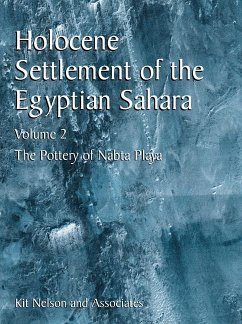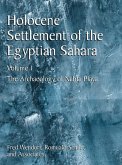The ceramic assemblages from the Nabta Playa and Bir Kiseiba area have played an important role in recognizing and defining the cultural sequence in the Egyptian Western desert. The exploration of the desert sites has yielded a ceramic chronology for the area that reaches back 6000 years to the earliest discovered pottery.
By taking a comprehensive approach to ceramic analysis, researchers were able to categorize pottery by scheme, construction, and distribution. This methodology allows for:
By taking a comprehensive approach to ceramic analysis, researchers were able to categorize pottery by scheme, construction, and distribution. This methodology allows for:
- describing the types of pottery uncovered;
- discussing the attempts at sourcing pottery;
- highlighting new methods of identifying types of pottery; and
- detailing the distribution of the various types from that region.








